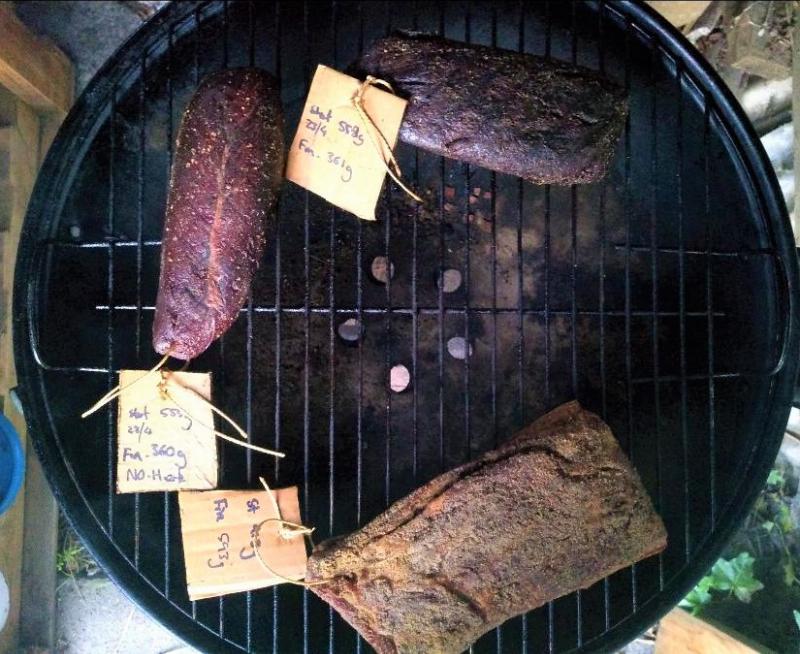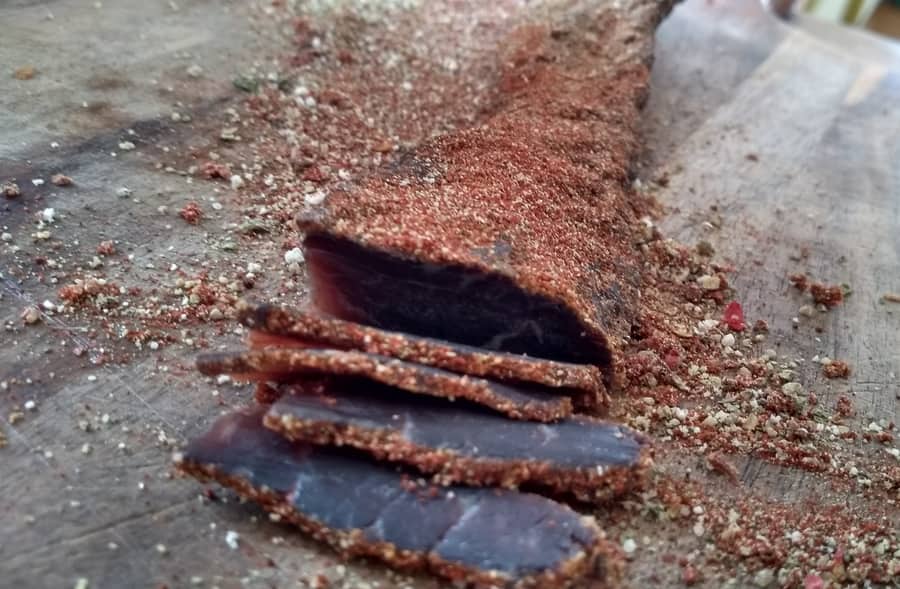Table of Contents
For decades, immersed in studying, working, learning, and teaching in the craft of meat curing, now sharing his passion with you through eat cured meat online resource.
You might want to savor your prized cut of beef, but can raw beef be preserved by salt?
Whether you are looking to enrich your diet with a high-protein source of beef, or you are simply looking at how to make your share of beef last for longer on your shelf, you might be curious about how to preserve it.
Raw beef can be preserved with a salt cure, salt brine/pickle, air drying, and cold smoke. These techniques reduce the growth of unwanted bacteria that spoil meat. Salt to encourage moisture removal in the beef is most effective.
Preserve beef comes in many styles: Biltong, Braesola, salt Beef, or short-term preserving, such as pickled pastrami beef.
This site is of course all about curing and preserving, and salt is the cornerstone of all techniques.
Continue reading to learn more about preserving raw beef with salt (and more).
Preserving Beef
Further details about each of these styles, which can be replicated at home:
| Style | Description | Time to Produce | Shelf Life |
|---|---|---|---|
| Biltong | Salt and Acidic Vinegar Cured and Denatured – Air-dried cured meat, typically spiced and sliced. | 2-4 weeks | 2-4 weeks |
| Bresaola | Salt Dry Cured, Air-dried, Dried beef. | 1-3 months | 1-24 months |
| Salt Beef | Beef is preserved in cans, often cooked and ready to eat. | 1 to 3 months | 6- 24 Months |
| Pickled Pastrami | Wet Cured in Vinegar, then Cooked Often Hot Smoked Beef brisket cured with spices. | Varies | 1-2 weeks |
| Canned Beef | Beef preserved in cans, often cooked and ready-to-eat. | Varies | 1-5 Years |
Salt Beef – Curing and Cold Smoking

Salt curing is when salt (and other spices and herbs) are added to begin the curing and preservation of meat.
This process reduces the growth of harmful bacteria, which, in turn, allows the piece of meat to be exposed to the elements without as much worry about harm.
This site is dedicated to many aspects of salt-curing meat.
Meat can be dried without salt also, more for a survival scenario. Thinly sliced beef over an open fire, for instance. Again, moisture reduction equates to an environment on or in the meat that unwanted bacteria do not like.
There is an art and craft to dry-curing meat (various methods for curing meat). Salt fish, salt pork, or salt fish is a more unrefined preservation method.
Salt curing meat has been practiced for centuries, as butchers and artisans sought to preserve large cuts of beef and other types of meat.
It was commonly used to allow prolonged use of the entire animal—something that could not be done if you only had a few days to consume the entire animal before the elements rendered it unsafe.
Today, this practice continues to preserve the meat of the animal you wish to consume. It also adds value to the meat, prolonging its shelf life and complex flavors using some styles (dry curing).
But, since no heat is applied directly to the meat in the cold smoking process, the meat dries and simply absorbs the delicious smoky flavor from the wood.
Then there is salt beef, salt pork, and salt fish – where the goal is purely to preserve, not so much for balanced flavor and texture.
When used with beef (as well as other types of meat), these processes will take longer than the commercial process of dehydrating meat using artificial additives and preservatives.
Depending on the type and cut of meat, the salt-curing process can take several days, and cold smoking (more I wrote on smoking and how it preserves here) generally takes hours or weeks.
Biltong

Biltong is an excellent example of a type of beef preserved by salt and denatured with acid from vinegar.
Although it is distinctively different from beef jerky in that it is allowed to cure rather than be immediately dried out or cooked..
Biltong originates from South Africa and has risen in popularity throughout the world, it is cured with salt, vinegar, and other natural spices and often has a bit of acidity to its flavor (stemming from the vinegar used in its preservation process).
Vinegar has a ‘cooking effect which is denaturing the protein, this works in tandem with the salt.
Another unique factor that many people do not realize when comparing Biltong to beef jerky is the type of beef cut used.
While beef jerky tends to be leaner, Biltong can include all parts of the beef source, meaning it can have a bit more of the delicious fat marbling dried and incorporated throughout.
This can significantly enhance the flavor and texture of the Biltong, depending on how it is prepared.
Nevertheless, Biltong is marinated in salt, vinegar, and other spices and allowed to air dry for over a week.
Depending on your location, Biltong can likely be found at your local grocery store or any other store selling beef and other related consumable items.
Classical Biltong is Salt, Vinegar, and Toasted Coriander Seed Crushed and coated.
Bring this snack along for your next hike to ensure the delicious taste of raw beef is preserved by salt.
I wrote a post on the steps to make biltong and jerky.
Dry Cured Meat – Bresaola

Bresaola is another example of dry-cured meat that has been salt-cured, air-dried, and transformed into a tasty delicacy.
This type of raw beef preserved by salt is often incorporated on Charcuterie boards and Antipasto (here is an article on cured meats for classic antipasto) platters in home kitchens and fine-dining restaurants.
Drying at favorable temperatures and humidity allows the meat (more about tips for meat curing) to lose moisture slowly and intensify flavor.
Depending on the recipe used, this type of beef might have several different flavor varieties.
The main ingredients:
- salt
- pepper
- cloves
- juniper berries
- cinnamon
- thyme
- rosemary
As a type of dry-cured meat, Bresaola is naturally produced and cured. Salt is used to cure the meat as it preserves the beef from growing unwanted bacteria.
Then, various natural spices are added to enhance this meat’s flavor profile, and it is allowed to air dry (hence the dry cure) for up to a few weeks.
This delicious example of raw beef preserved by salt is often served in thin slices rather than consumed on a slender stick like Biltong.
When it is served as a delicacy in a beautiful presentation, it will probably be topped with a drizzle of olive oil or finely grated cheese, depending on the desired presentation.
Either way, Bresaola has a strong flavor and a rich coloration.


Comments
Really interested in preserving beef. Refrigeration, no refrigeration, salt curing.
cool, i prefer venison, since thats what I can get when I hunt.